
Water determines the Great Lakes Region’s economic future
Climate change, geopolitics and business opportunities power a blue economy
Dinners in Roberta Olson’s restaurant begin with a taste of k’aaw.
The dried herring roe on kelp is a traditional food for the Haida people, an Indigenous nation that has called Canada’s Haida Gwaii (Islands of the People) archipelago home for at least 12,000 years. As the roe crunches between your molars, the flavour and sensations combine in a wholly unfamiliar way; imagine chewing pop rocks that taste like the sea.
The restaurant, known as Keenawaii’s Kitchen (in reference to Olson’s Haida name), is run out of the living room of her home, its furniture rearranged to accommodate groups of 20 or so hungry patrons. Surrounded by traditional Haida art, facing windows that boast nearly 180-degree views of the Hecate Strait from the town of Skidegate, diners feast on a hearty chowder made from halibut, along with bites of fresh and dried salmon, clams, and herring. For dessert, wild berry pie is accompanied by nettle tea.
Once upon a time, any of the dishes on Olson’s menu could have been made using only animals and plants harvested from Haida Gwaii and from the seas surrounding it. Now, the k’aaw she serves to provide patrons a taste of traditional Haida cuisine have to be imported from Bella Bella, a town some 280 kilometres (174 miles) away on the Canadian mainland.
The Haida have a saying: G̱andlaay iinang ad sG̱uuluu G̱ihl — the water is bubbling with herring. But it’s become a linguistic relic from a different time.
The kelp forests that once provided a place for herring to deposit their eggs have all but disappeared.

Roberta Olson serves traditional Haida dishes in her restaurant, Keenawaii’s Kitchen, but increasingly, she and her suppliers are having to venture beyond the bays of Haida Gwaii to source ingredients. Photo: Roberta Olson
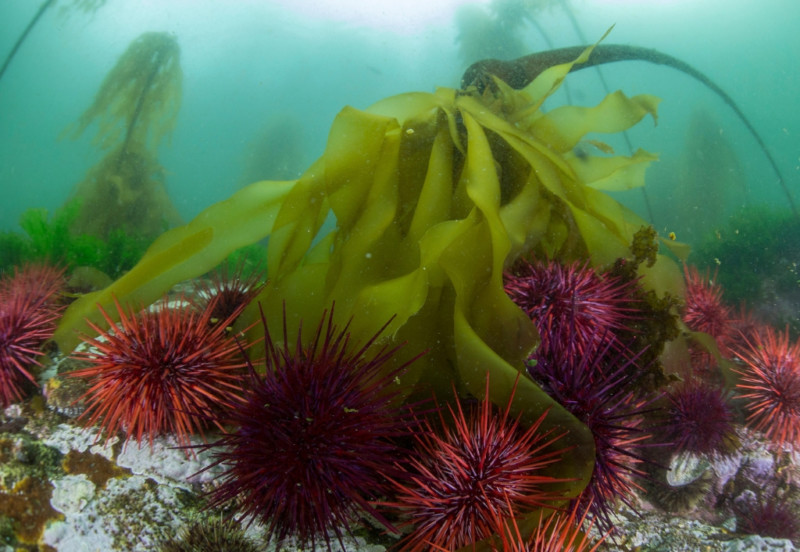
Historically, sea urchins coexisted with kelp, which provided shelter and sustenance for the urchins and scores of other creatures. But the local extirpation of sea otters has allowed urchins to become overpopulated, wreaking havoc on the ecosystem. Photo: Ryan Miller
Throughout the archipelago, what was once a lush underwater ecosystem is now an urchin barren: spiky balls as far as the eye can see.
Historically, sea urchins coexisted with the kelp, which provided shelter and sustenance for the urchins and dozens of other creatures, including sea otters, abalone, herring, starfish, rockfish, salmon, and more. Sea lions followed the herring, and orcas followed the salmon.
But the fur trade of the eighteenth and nineteenth centuries decimated wild sea otter (Enhydra lutris) populations, and with no otters around to eat them, sea urchin populations exploded. The invertebrates gobbled up everything in sight, clearing the area of the kelp forests on which the entire ecosystem hinged.
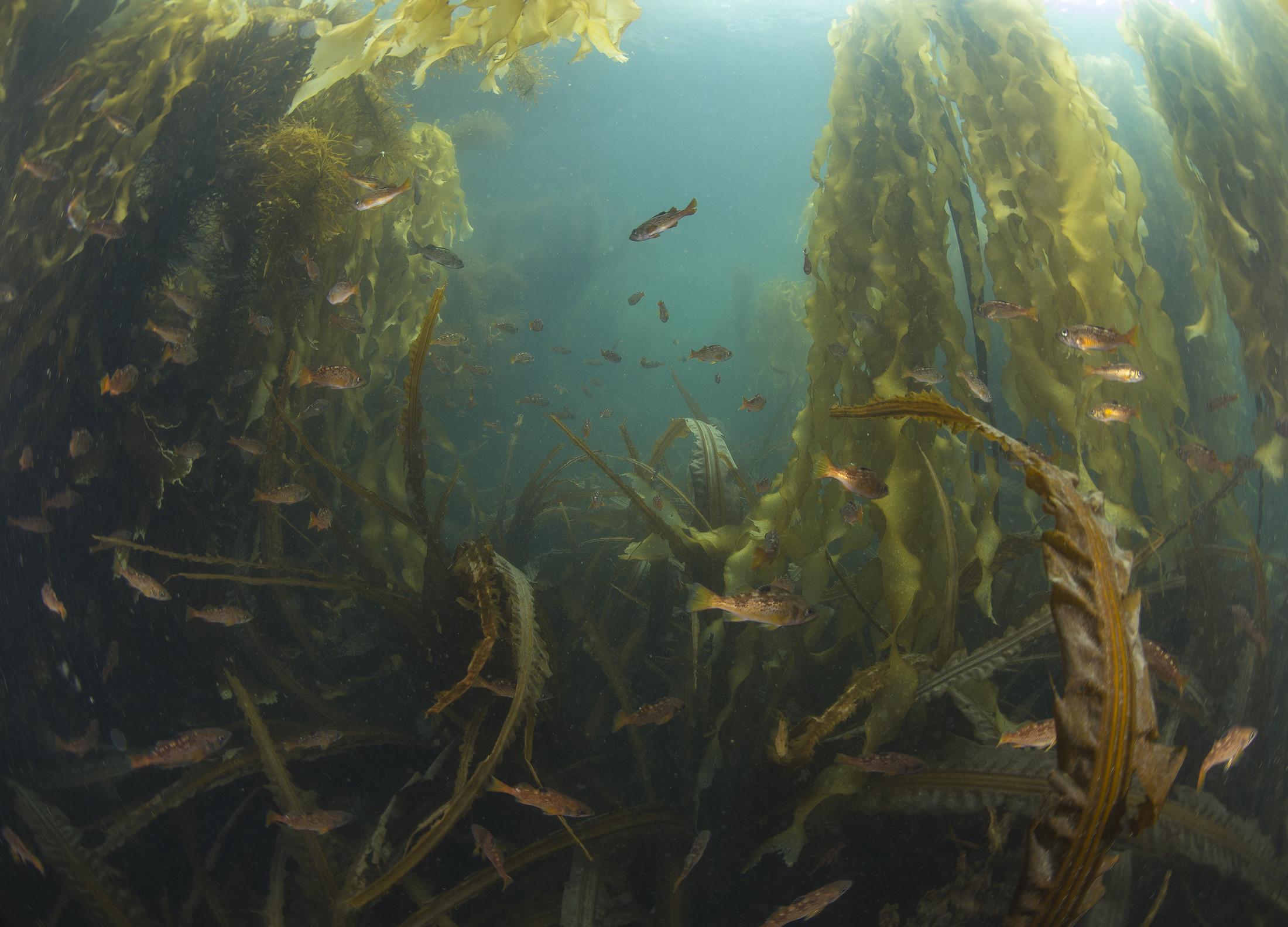
Two species of canopy kelp that have especially benefited from urchin removal include bull kelp and giant kelp, and many species of understory (shorter) kelp are benefitting as well. Photo: Ryan Miller
Conventional wisdom holds that sea otter recovery would help to correct the imbalance, allowing the ecosystem to return to its original state — not unlike the stories told about the reintroduction of wolves into Yellowstone. And that could set the stage for the return of herring, and abalone, and other foods the Haida have relied on for thousands of years.
Thanks to modern protections and conservation efforts, otter populations along the British Columbia mainland and Vancouver Island have begun to recover. While there are no plans to reintroduce otters to the archipelago, with ongoing protection, it seems only a matter of time until they find their way back on their own. Locals say they’ve already seen a few lone individuals floating around the islands.
The prospect of otters returning to Haida Gwaii has some on edge, though. After all, the voracious mammals and fishermen here rely on many of the same food resources, including abalone and the overpopulated urchins.
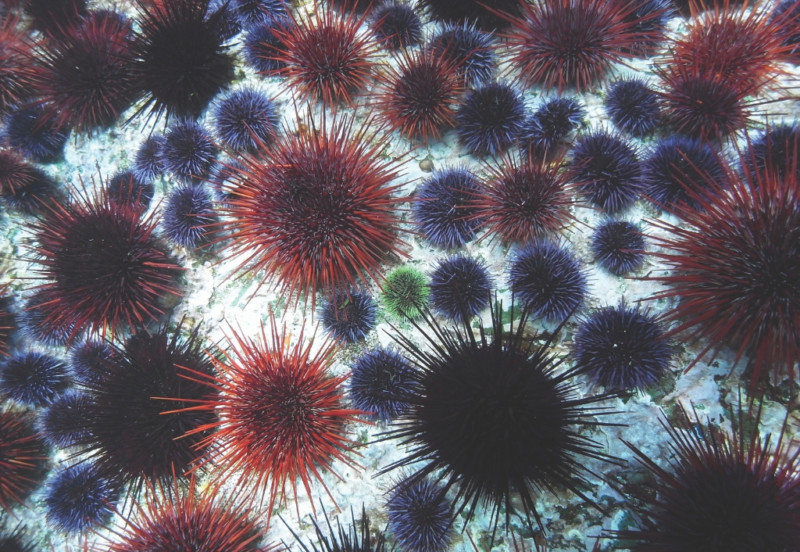
Urchin barrens like this one, which are devoid of much of the biodiversity for which kelp forests are known, have become commonplace around Haida Gwaii since the local extirpation of sea otters. Photo: Lynn Lee
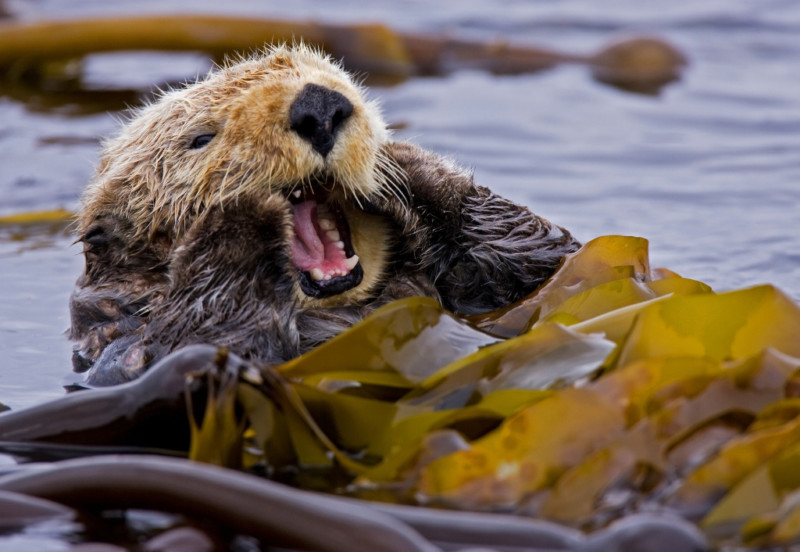
Sea otters are voracious predators that compete for many of the same food resources that local Haida fishermen target and some people in the local community are anxious about their return. Photo: Matthew Maran
Rather than wait to see what happens when sea otters return, scientists and officials from the Haida Nation, Parks Canada, and Fisheries and Oceans Canada, together with researchers from academic institutions and non-profit organizations as well as representatives from the commercial fishing sector, are now working within the Gwaii Haanas National Park Reserve, Marine Conservation Area Reserve, and Haida Heritage Site.
As equal co-managers of Gwaii Haanas (Islands of Beauty), which are part of the larger archipelago, it’s a remarkable example of cooperation, especially considering that the Haida Nation and the Canadian government have never completed a formal treaty.
Together, the researchers are studying the role played by each member of this coastal community — urchins, abalone, kelp, and so on — in order to create a mathematical model for the entire ecosystem. By doing so, they will be better able to anticipate and make policy decisions around what the eventual recovery of otters might mean — for plants, animals, and people alike.
This information will be critical, says Florida State University biologist Dan Okamoto, a scientific collaborator on the study, particularly when the interests of one set of stakeholders, like tour operators who stand to benefit from the eventual return of the charismatic otters, come into conflict with those of another, like commercial urchin fishermen.
Haida culture considers human communities a part of a complete ecosystem, rather than separate from or superimposed onto the natural world. That’s why their traditions are inextricably bound to this place, to the wildlife communities that call it home, and to the rapidly disappearing food resources the ecosystem provides. For the Haida, kelp forest recovery isn’t just about biodiversity conservation. It is also about cultural conservation, about Chiix̱uu Tll iinasdll (nurturing seafood to grow).
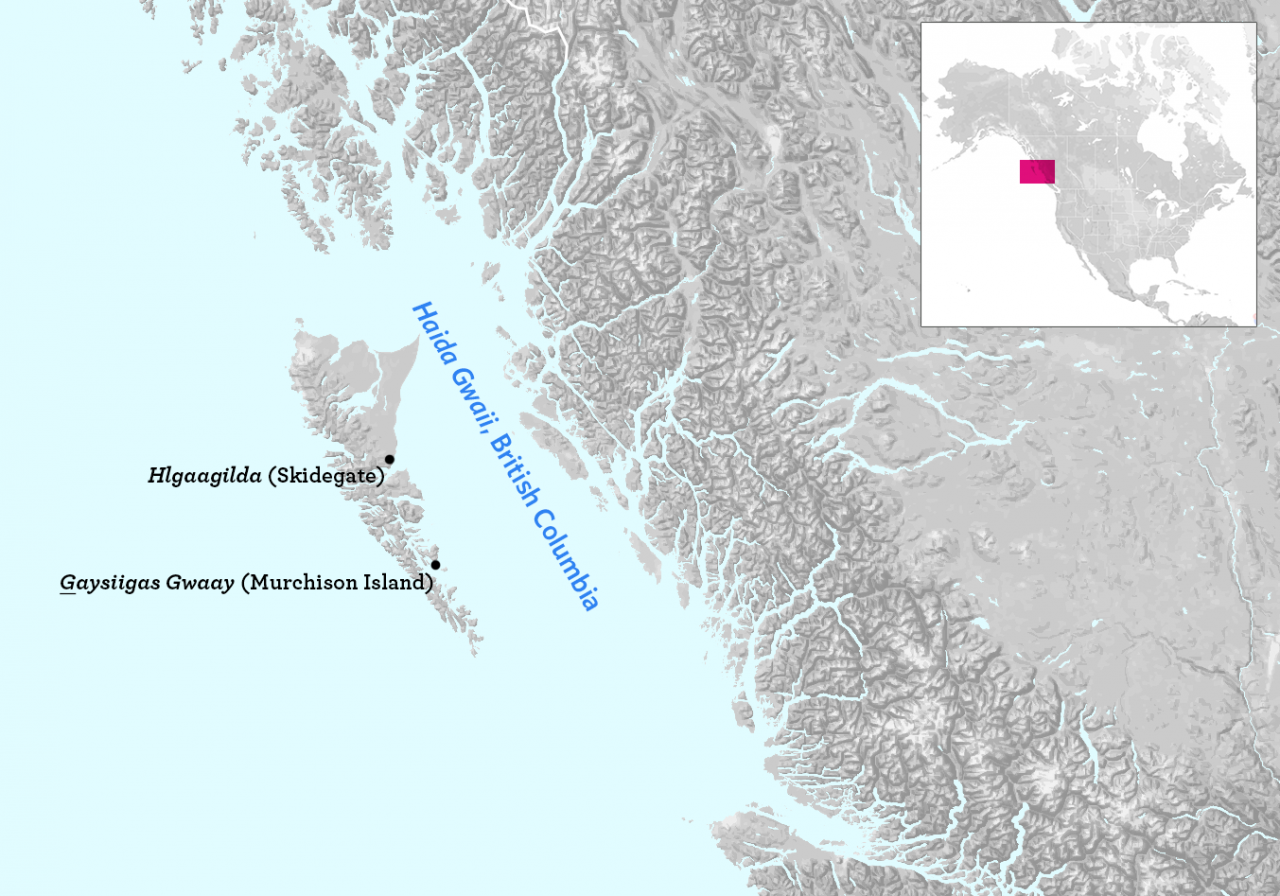
Map: James Davidson
If there is to be a future for the Haida Gwaii archipelago, one with a sustainable food harvest as well as a healthy sea otter population, it will require people to be actively involved in the management of the land- and sea-scape, as the Haida have been for thousands of years, says biologist Dan McNeill.
On a cool autumn morning last year, McNeill, scuba tanks on his back and hammer in hand, slipped into the cold water that flows past G̱aysiigas Gwaay (Murchison Island), one of approximately two hundred islands that comprise Haida Gwaii.
McNeill, whose Haida name is Gwiisihlga, is a shellfish specialist for Haida Fisheries and one of several scientists tasked with gathering the data that will feed into the kelp ecosystem model. On this particular day, the task was relatively simple.
Dipping beneath the surface, he swam a couple dozen feet toward the bottom, where multicoloured urchins blanketed the seafloor. Once there, he began harvesting the urchins that seemed likely to contain large enough chii, the edible gonads referred to by the Japanese name uni, to be worth hauling back to shore. The truth is, most of the urchins McNeill saw on that day weren’t worth the trouble.
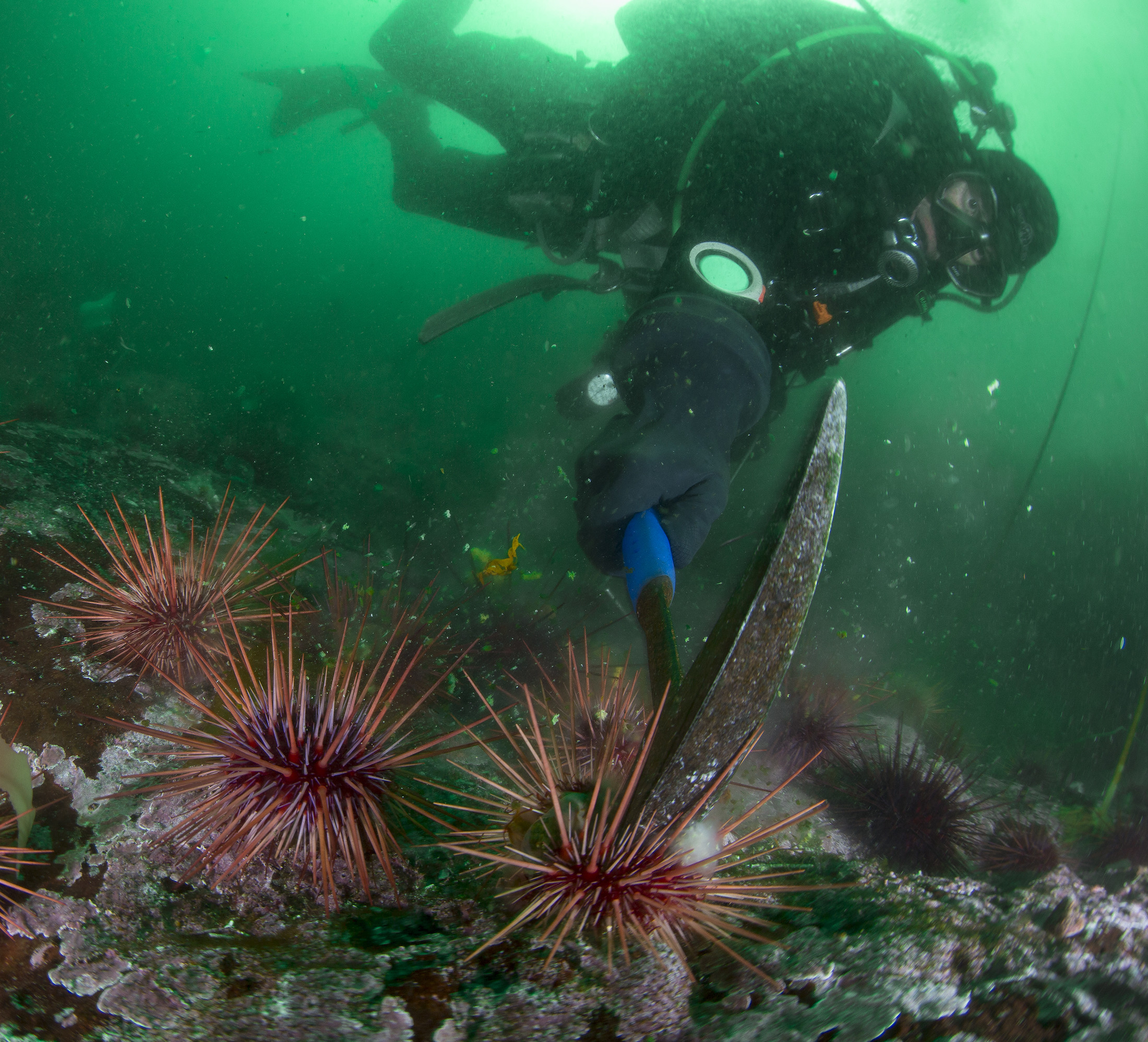
Ben Penna, a Haida Fisheries Program science diver, cracks an urchin. The Haida Nation, Fisheries and Oceans Canada, Parks Canada, commercial urchin fishers and many partners are working to restore kelp forests by removing at least 75 per cent of the sea urchins along three kilometres of the Gaysiigas Gwaay (Murchison Island) shoreline. Photo: Ryan Miller
“When you go down into the barrens,” says marine ecologist Lynn Lee, who is technical lead for the kelp forest restoration study, “only [those] in the first few meters are any good for the market — right against the kelp line in the shallows.” This is because urchins tend to avoid the shallowest areas, where breaking waves would thrash them about, and that leaves only a narrow strip of kelp to grow unencumbered.
After collecting a small haul, McNeill and the rest of the team he supervises began systematically dispatching the unmarketable urchins with a hammer, leaving their shattered corpses behind to serve as food for fish and other invertebrates, their nutrients reclaimed by the ecosystem.
They would go on to kill hundreds of the spiky invertebrates that day. “I think well over a half million urchins have been removed from the research site now,” McNeill says. “And there’s easily another hundred thousand [remaining].”
What might have looked like a malicious act was, in fact, the team’s effort to make up for the absence of otters here, albeit on a relatively small, experimental scale.
“We don’t have sea otters in Gwaii Haanas right now,” says Lee. “[But] what if we could mimic the effects of sea otters eating urchins? If we decrease the urchin population to the same degree that otters would, then we expect that the kelp spores will survive, and a kelp forest will start to grow.”
And that could, in turn, bolster the local population of endangered northern (or pinto) abalone (Haliotis kamtschatkana) and other species that rely on kelp forest habitats to survive. In other words, if McNeill and his team can make an otter-sized dent in the urchin population, the ecosystem could perhaps begin to right itself.
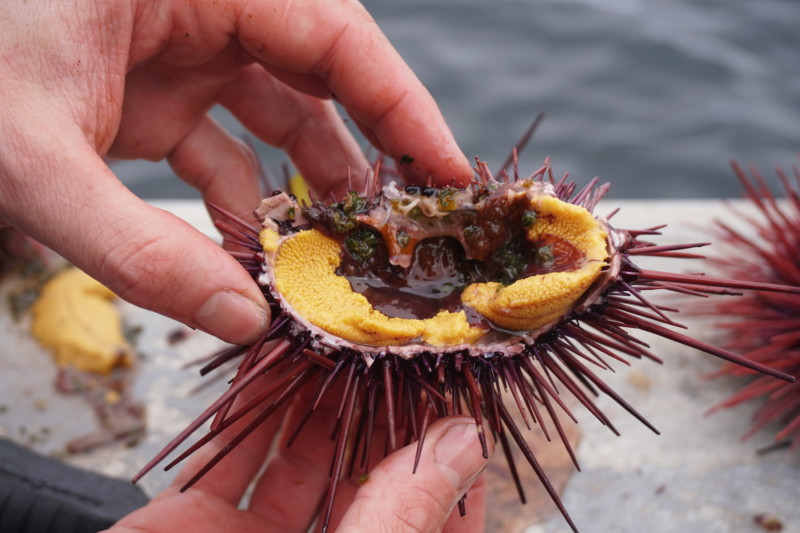
Guuding.ngaay (red urchin roe) is a traditional food of the Haida people. During the urchin-removal project, researchers distributed roe to communities on Haida Gwaii a number of times. Photo: C. Houston
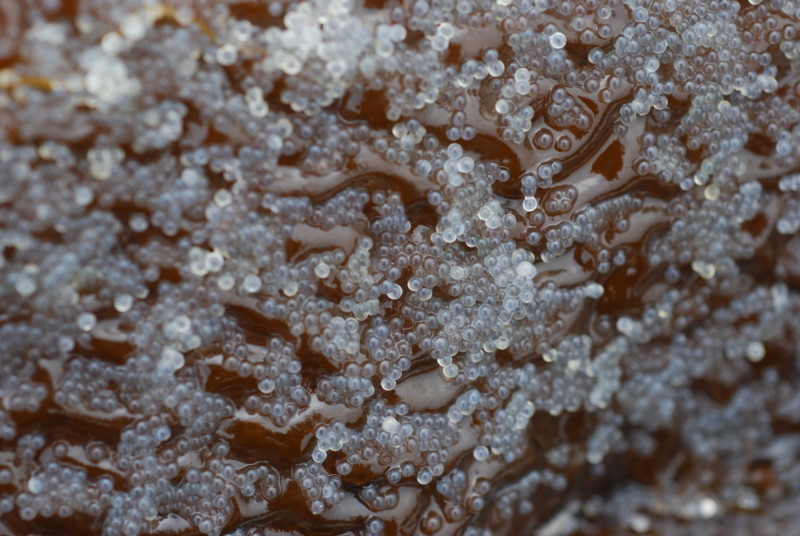
K’aaw (herring roe) is an important food for Haida people and many Indigenous communities along British Columbia’s north and central coast. Photo: Parks Canada
Lee’s idea is based in large part on her previous research. Several years ago, as part of her PhD work at Simon Fraser University, she compared otter-free areas with sites where the predators had been reintroduced. She discovered that otter predation suppressed urchin populations enough to benefit the abalone. Even though some of the mollusks inevitably wound up down otter gullets, the indirect and long-term effects on abalone outweighed the immediate ones, thanks to the critical habitat that the predators helped to restore.
This idea is supported by the team’s recent urchin-smashing experiment.
Six months after it began, Lee, McNeill, and the rest of the team returned to re-survey the treatment area, which spans some 20 hectares along 3 kilometres of Gwaii Haanas coastline. There, they saw bull kelp (Nereocystis luetkeana) — an annual species that can grow up to 10 inches per day — already beginning to recolonize the area, hundreds of individual kelp spikes sprouting from the seafloor.
The control site, which did not get the urchin-cull treatment, was unchanged: a vast urchin barren, nary a kelp to be found.
While Lee isn’t willing to make sweeping conclusions yet — the data has not yet been fully tallied — her hunch is that fish abundance had also increased, as other ocean dwellers began to take advantage of the recovering habitat. “It was pretty amazing to see the change,” she says. “The ecosystem response has been phenomenally quick, faster than I had thought.”
On a calm summer day, three months after that follow-up survey, Okamoto, the Florida State biologist, and his graduate student Nathan Spindel are sorting urchins aboard a floating laboratory in a sheltered bay in the Bischofs, a string of islands about 20 minutes by boat from Murchison Island. Spindel places each animal, collected from the seafloor earlier that day, into its own tank, and after giving the creature time to acclimate to its new surroundings, seals the tank shut.
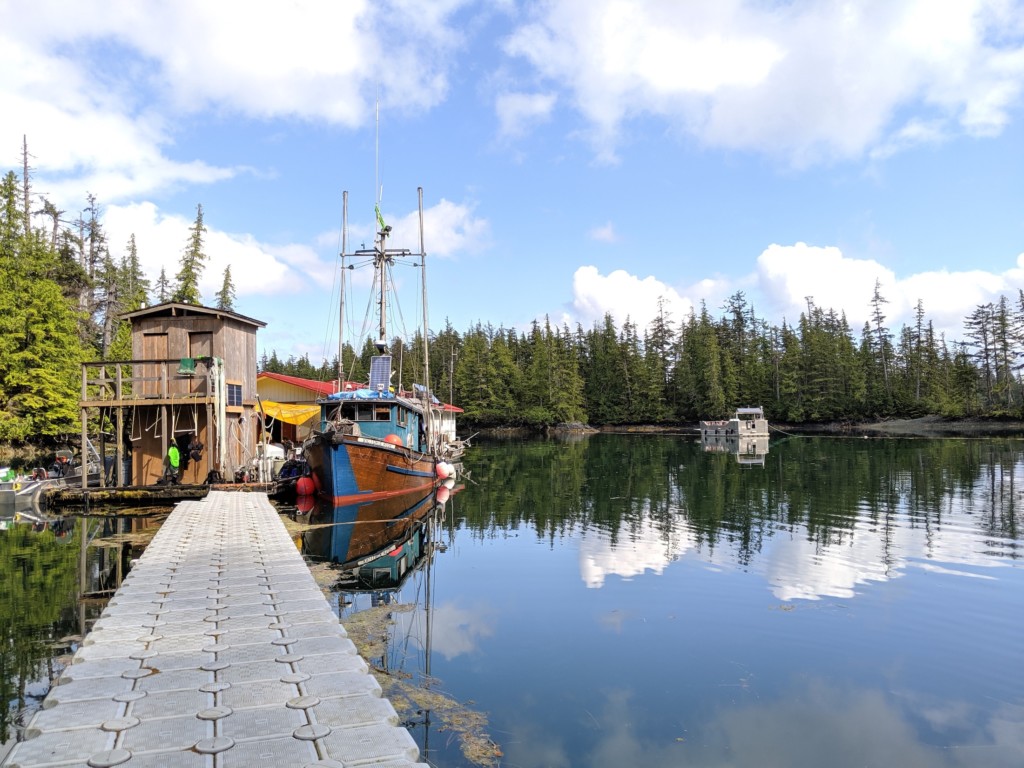
A boat sits on a quiet bay along the Haida Gwaii coastline. Photo: Jason G. Goldman
Small sensors inside the tanks monitor the amount of dissolved oxygen in the seawater and send the information to a laptop computer nearby. As the urchins breathe, the concentration of oxygen inside the tank drops. By monitoring the rate at which the oxygen level decreases, Spindel can get a rough estimate of the urchin’s metabolic rate, a proxy for its overall wellbeing.
While the findings haven’t been formally published yet, early results are consistent with the researchers’ expectations. Well-fed urchins collected near the kelp line in the control site have higher metabolic rates than those collected from the barrens. It’s an adaptation, Spindel says: By slowing their metabolism, urchins can survive longer in a barren, where food is scarce.
Later, Okamoto uses a special Japanese tool he picked up online designed for cracking urchins apart so that he can have a look at their reproductive organs. Large and butter-coloured, the gonads from these urchins are in prime condition — and they taste delicious. By contrast, the gonads of urchins collected from the barrens are smaller and darker.
“Long ago, our people knew how to harvest and knew how to keep balance so that the ecosystem still had all parts intact.”
— Barbara Wilson, Haida elder
Spindel thinks of urchins in a barren as a zombie army. “They can persist in a barren state for decades,” he says. They may find enough food to scrape by, but without adequate nourishment, their gonads won’t develop enough to be capable of reproduction, let alone to be worth placing atop a ball of rice and dunking into soy sauce. If the ultimate purpose of all biological life is to survive and reproduce, zombie urchins have only succeeded halfway.
Spindel will go on to subject urchins collected from the area where the cull was conducted to the same tests inside the sealed tanks. The shallow-zone urchins, living near the kelp line, were once again perfectly healthy, Lee tells me later. And those collected from deeper areas, where fresh bull kelp had begun to grow, showed signs that their condition was beginning to improve. In other words, the early evidence suggests that the animals are indeed responding to the intervention.
This means, at least in principle, that while the return of otters would likely result in a smaller urchin population, the overall community would have fewer zombies. They would have larger gonads, better for the long-term prospects of the urchin population.
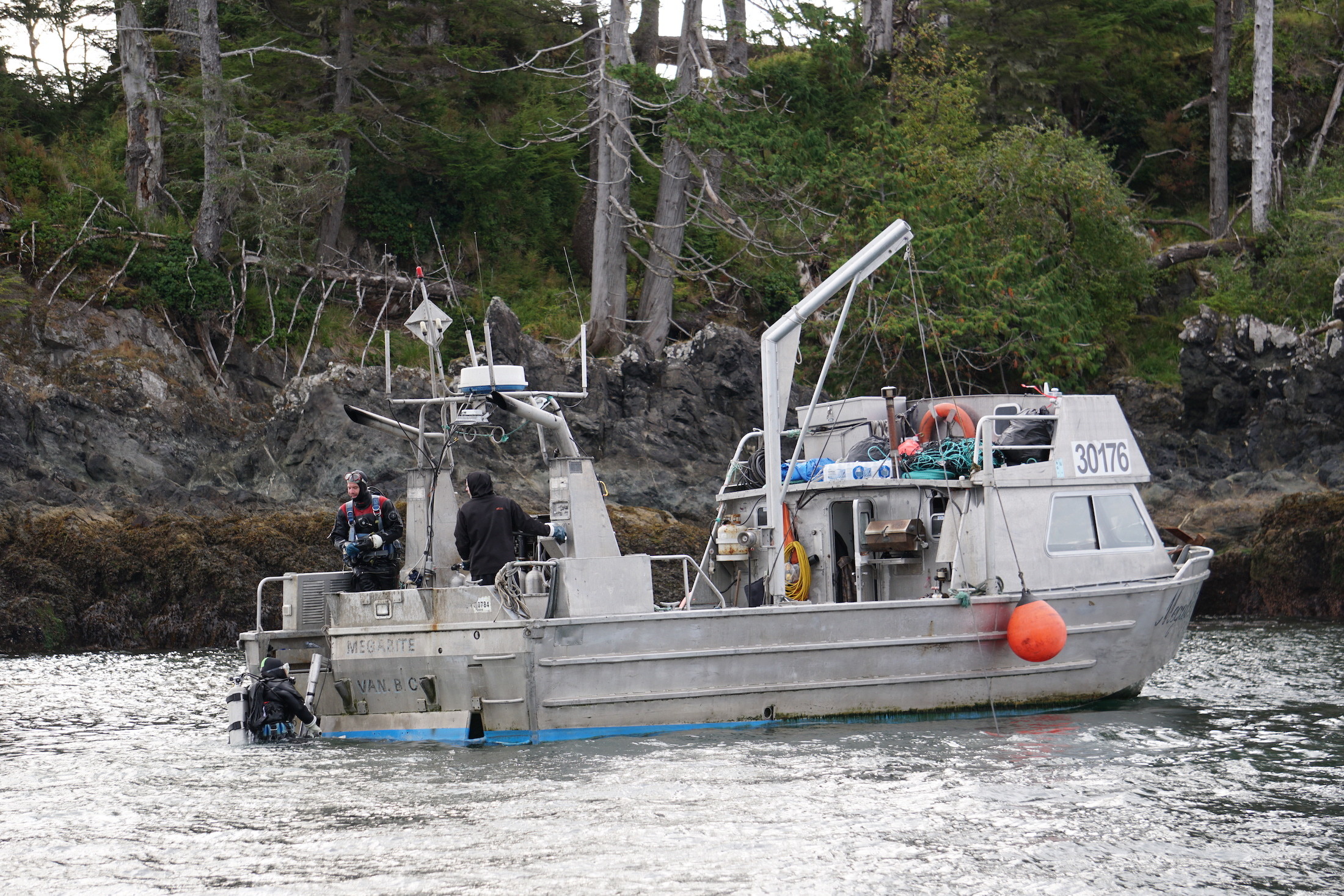
Commercial urchin divers wrap up a day working to restore the kelp forest ecosystem off Haida Gwaii by collecting sea urchins and distributing their roe to local communities. Photo: C. Houston
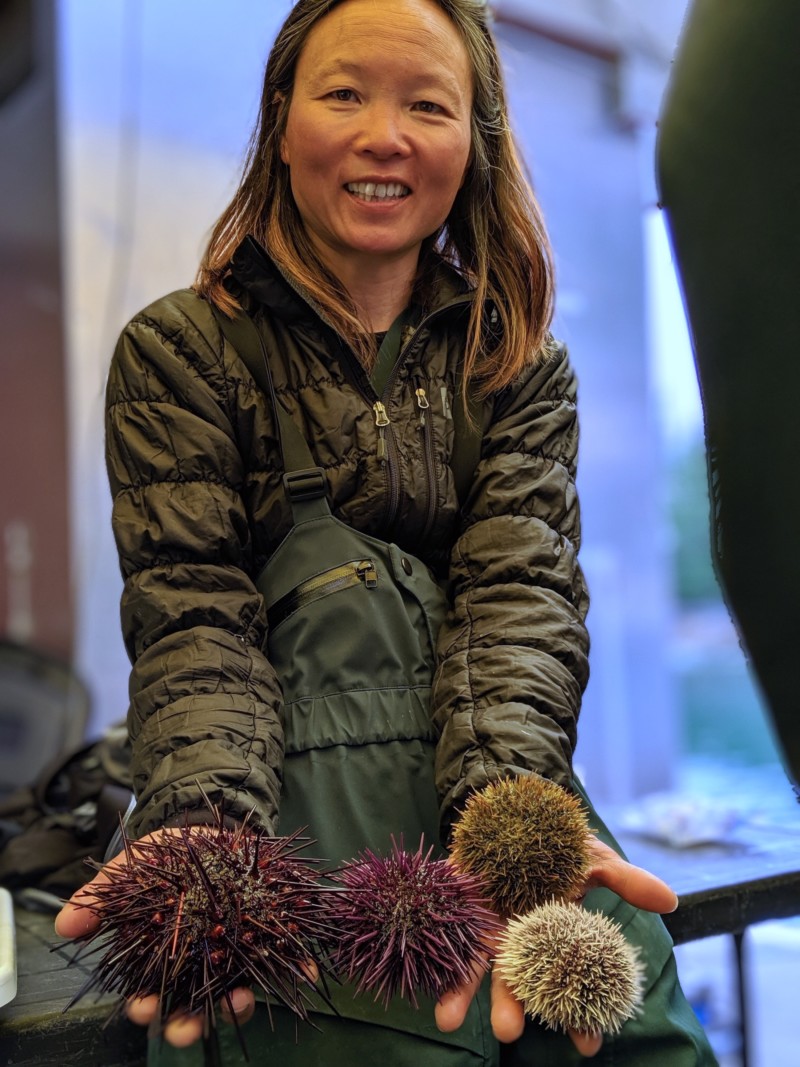
Marine ecologist Lynn Lee displays a variety of sea urchins that currently overpopulate the seafloor around Haida Gwaii. She and her team are exploring how the return of sea otters might influence this out-of-balance ecosystem. Photo: Jason G. Goldman
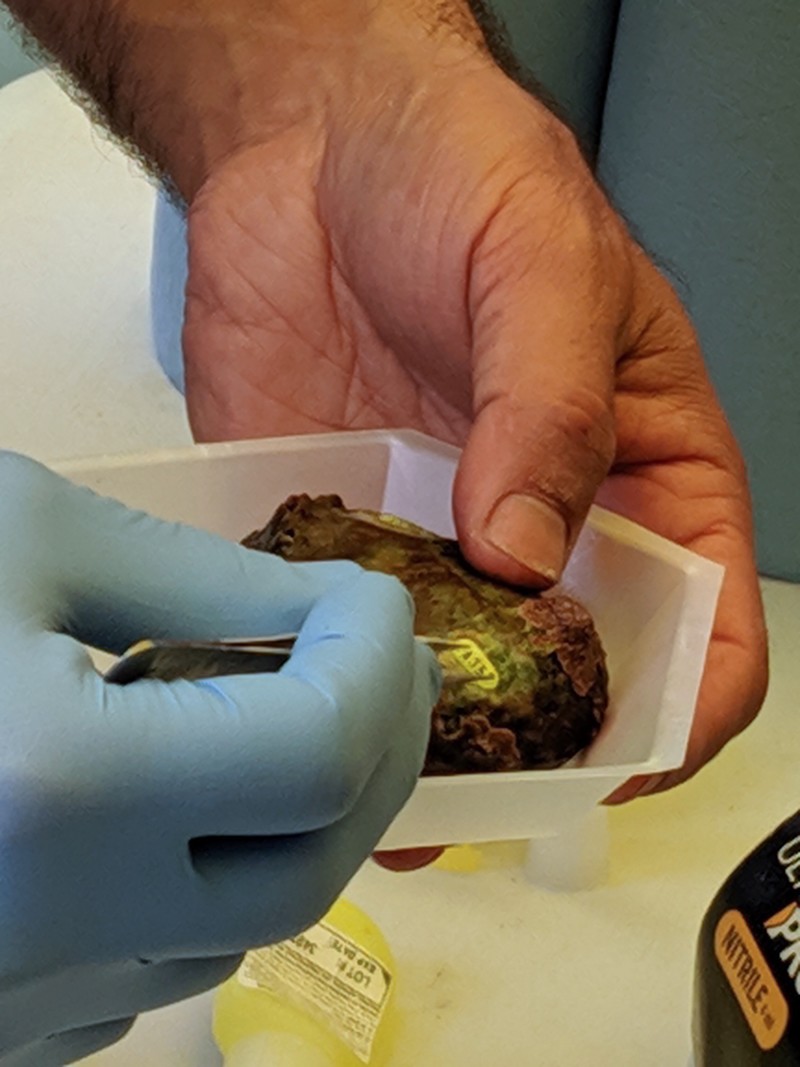
Leandre Vigneault attaches a numbered tag to a northern abalone. The tag will enable researchers to identify and assess the wellbeing of this individual in response to changes in the health of the kelp forest ecosystem over time. Photo: Jason G. Goldman
This is potentially good news for creatures like abalone that also depend on intact kelp forests. While Spindel keeps his eyes on the urchin experiment, nearby Leandre Vigneault is focused on several sacks of abalone that divers collected earlier in the day from both the experimental and the control sites. He uses a small electric grinder to harmlessly carve out two spots in the outer layer of each mollusk’s shell, just large enough for a pair of tiny numbered tags. Having done this particular task several summers in a row, his speed and efficiency minimizes the stress to the animals, though “they do seem to have moods,” he says. Some are remarkably tolerant of the vibrations from the tool, while others twist their bodies around in a futile attempt to escape.
As he epoxies the tags onto each shell, the numbers are recorded in a logbook, along with the abalones’ sex, weight, and other data. Later, the mollusks will be returned to the locations where they were collected, and next summer, Okamoto will use their tags to identify the individuals he’s able to re-capture, and assess their wellbeing.
By doing this season after season, he’ll be able to determine whether the abalone in the experimental site, where the urchin population has been artificially reduced, are more likely to survive, how mobile they are, and whether they are more likely to reproduce than abalone in the control site. If so, then the results of this study would bolster Lee’s earlier findings, that by chowing down on urchins, otters can play a positive — if indirect — role in the recovery of northern abalone.
While that would be good news from a research and conservation perspective, convincing fishermen of the benefits of otters is a taller order.
“From our fishery point of view, the biggest threat to the sustainability of red sea urchin [harvest] is sea otters,” says Mike Featherstone, President of the Pacific Urchin Harvesters’ Association, which is also a partner on the kelp forest recovery project. As evidence, he points to areas where otters have begun to recover. Crab traps sit useless on Alaska docks because otters have eaten up all the crabs, he says. If otters return to Haida Gwaii, he fears the same could happen there, for urchins and abalone. “There will be no commercial fishing, and there will be no recreational fishing,” he says.
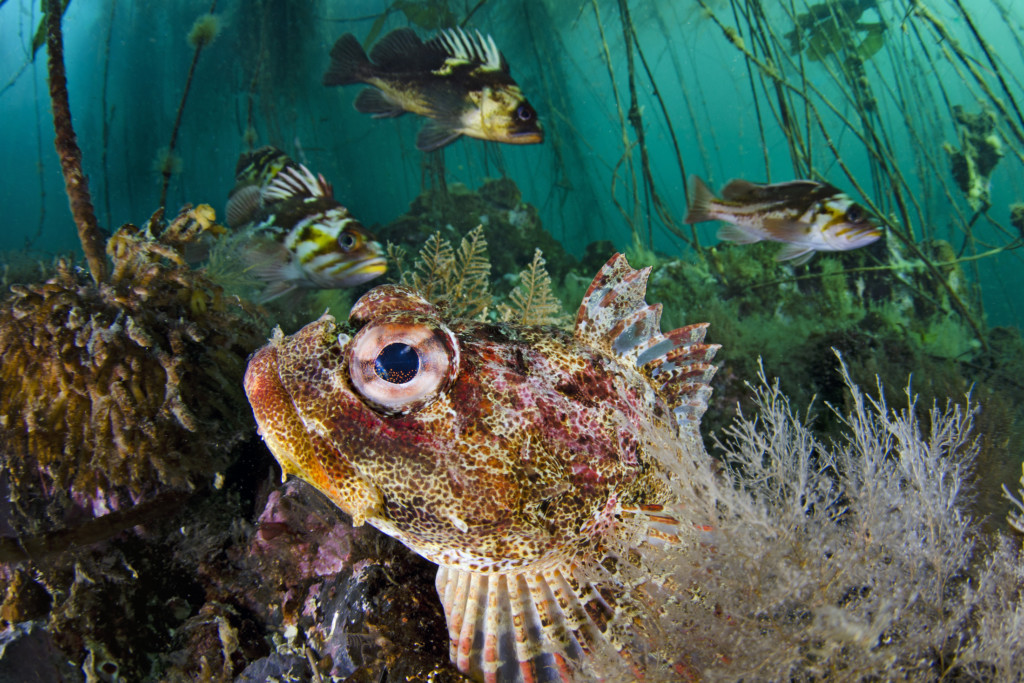
A red Irish lord hides on the seabed with quillback rockfish and copper rockfish behind in a bull kelp forest. Photo: Alex Mustard
The trouble with that complaint, many experts argue, is that these fisheries have only ever been commercially profitable because of the extirpation of sea otters nearly two centuries ago. In 2003, researchers discovered that large red sea urchins (Mesocentrotus franciscanus) in coastal British Columbia could be more than a hundred years old. This means that the modern commercial urchin fishery relies upon populations that grew as a direct result of the reduction in predation by otters.
“Since the extirpation of the sea otters, the foods that we share with them have become commercialized,” says Haida elder Barbara Wilson, whose recent Master’s thesis at Simon Fraser University focused on employing traditional teachings to develop climate change adaptation strategies on Haida Gwaii.
The fur trade may have turned the kelp forest ecosystem on its side, but the commercial fisheries that grew up in its place have continued to exploit it, taking advantage of its altered, otter-less state. That exploitation may, at one time, have appeared sustainable but what does a sustainable harvest even mean in an already-altered ecosystem?
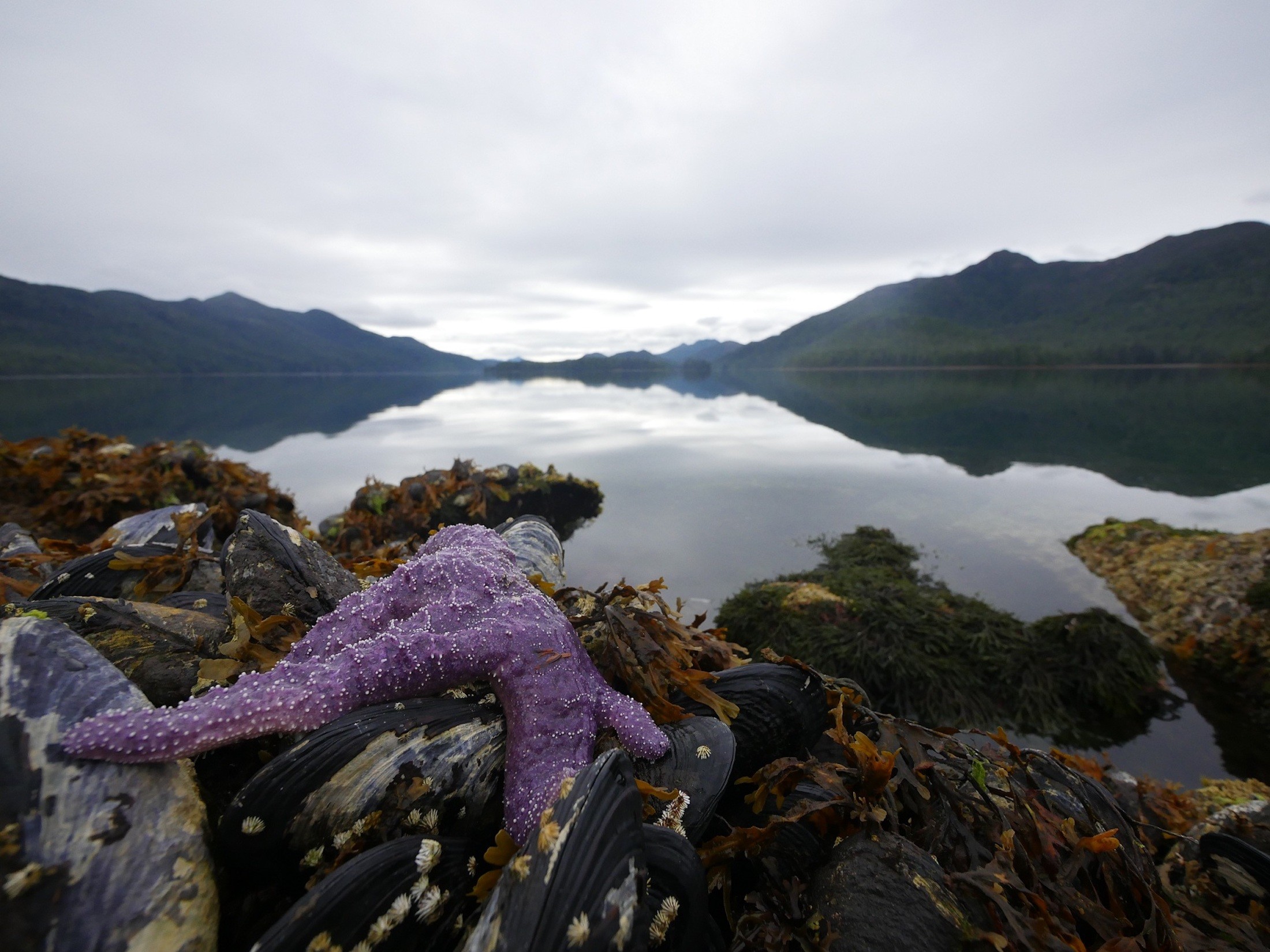
Gwaii Haanas is place where land, sea and people are intertwined. The area is protected from the bottom of the ocean to the tops of the mountains thanks to its status as a Haida Heritage Site, National Park Reserve and National Marine Conservation Area Reserve. Photo: S. Fung
Fast forward two hundred years and even the 36-year-old McNeill has noticed the decreasing availability of traditional foods since he was a child. “There’s hardly anything left. This is not sustainable as it once was.”
Indeed, while abalone populations initially increased alongside urchin populations when otters were removed, they later crashed as a consequence of habitat loss and overharvest. And the lack of local k’aaw for Roberta Olson’s dinners owes at least as much to the impact of the herring fishery over the last few decades as it does to the much earlier slaughter of otters.
The Haida have another saying: Chiix̱was gen gaguu gataa daanaay guu ga taa iijii — when the tide is out, the table is set. But now, as Roberta Olson and others have learned, the table can no longer be set simply by wading a few meters past the beach.
To achieve biodiversity conservation alongside food cultivation goals, says Wilson, will require merging traditional Haida knowledge with modern scientific evidence. “Long ago, our people knew how to harvest and knew how to keep balance so that the ecosystem still had all parts intact.” Indeed, Haida communities found a way to coexist with otters while still harvesting enough urchins and abalone to feed pre-contact populations, which likely numbered more than 10,000 people.
That balance meant the exclusion of otters from traditional food-gathering areas. The Haida hunted the marine mammals from canoes using bows and arrows or harpoons. By keeping certain areas free of otters, more food resources became available to Haida people.
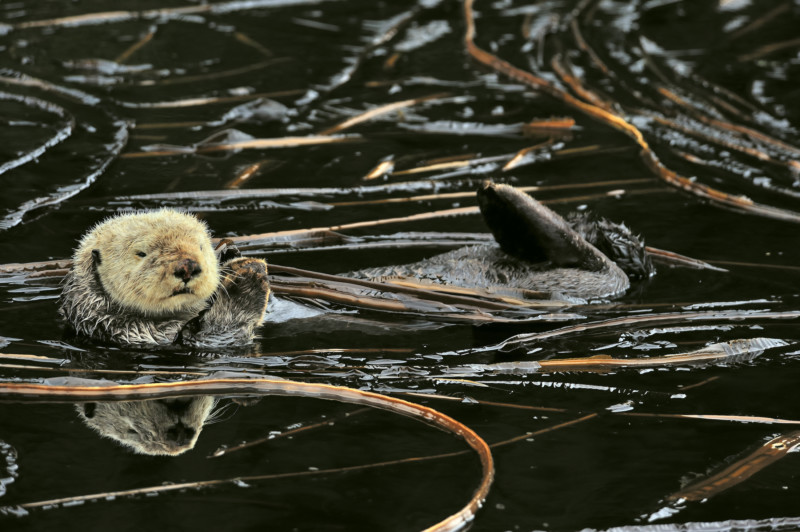
The Haida people once coexisted with sea otters, but that balance has since been thrown off. The question is whether it can be regained when otters return to Haida Gwaii. Photo: Pascal Kobeh
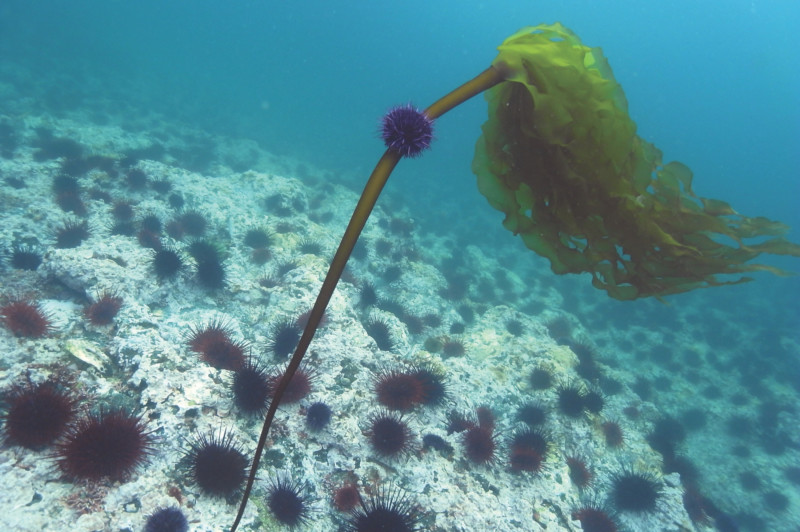
In Gwaii Haanas urchin barrens, kelp is scarce. As a result, urchins here tend to contain too little roe to be marketable. Photo: Lynn Lee
“There was a management regime up and down the coast by all the nations. They didn’t just get rid of them,” says Wilson referring to the otters. The ancient, pre-fur trade coastline was like a patchwork quilt. In areas kept free of otters through hunting, humans had the chance to partake of the invertebrate bounty. Other areas, further from human communities, would have been available to the otters as a refuge from hunting pressure.
“They realized that balance is important, and that’s the thing that’s missing now,” she says.
As human communities moved around, the otter-exclusion zones would have shifted accordingly, allowing each exploited area the chance to recover. It wasn’t until the Haida began to supply fur traders with otter pelts that the balance Wilson speaks of began to wobble: The hunting pressure on otters intensified, and the decreasing Haida population began shifting from small, temporary villages into larger, permanent communities.
“With the return of sea otters, there’s going to be competition with commercial [fisheries],” says Wilson, as well as with the 2,500 or so Haida still remaining in their ancestral homeland, who continue to turn to the sea for food.
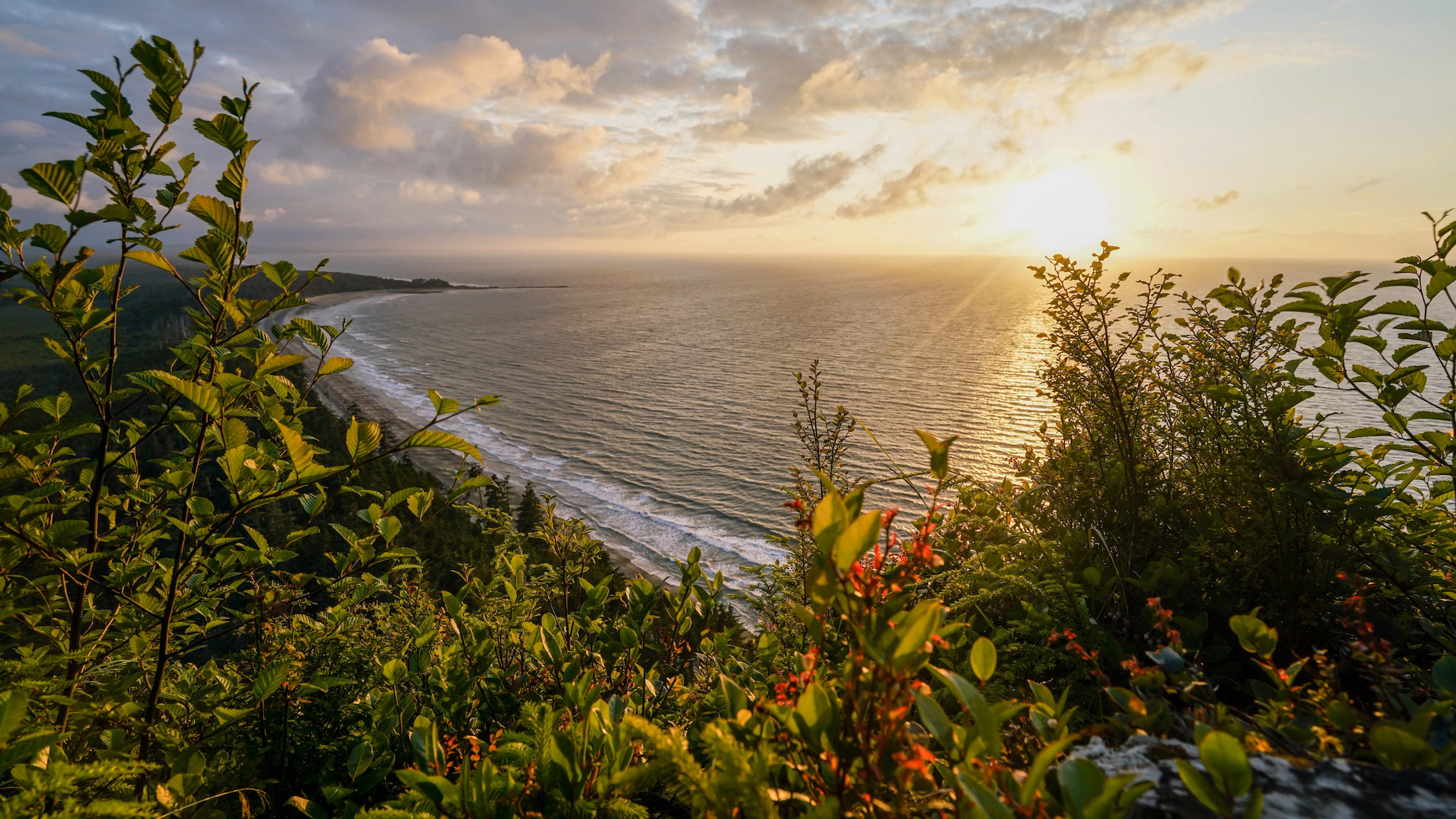
The picturesque Haida Gwaii coastline. Photo: Gregory Gould
If that day comes, perhaps the Haida Nation together with the Canadian government could permit the Haida people to resume their traditional otter hunting practices, in a limited, scientifically-informed manner, as some Native Alaskan communities are now allowed to do, Wilson says. “Let’s look at what our ancestors did and see what we can reinstate so we can live together again,” she says, and ensure that the Haida culture will live on for generations to come.
For his part, McNeill is trying to introduce young people in Haida Gwaii to traditionally important foods. “That’s why we’re bringing urchins into the community, into the schools, going around to the elders, handing them out,” he says. For McNeill, that’s only half the job.
“It’s one thing receiving and eating,” he says. “But it’s another thing being out there on the water, harvesting, paying your respect to the critter. All of that stuff is critically important for our culture to keep going.”
This story originally appeared on bioGraphic, an online magazine about nature and sustainability powered by the California Academy of Sciences.
Get the inside scoop on The Narwhal’s environment and climate reporting by signing up for our free newsletter. On a warm September evening nearly 15...
Continue reading
Climate change, geopolitics and business opportunities power a blue economy

10 billion litres of sewage are dumped into Winnipeg’s lakes and rivers each year. Some...

Court sides with Xatśūll First Nation, temporarily halting Mount Polley mine waste expansion
